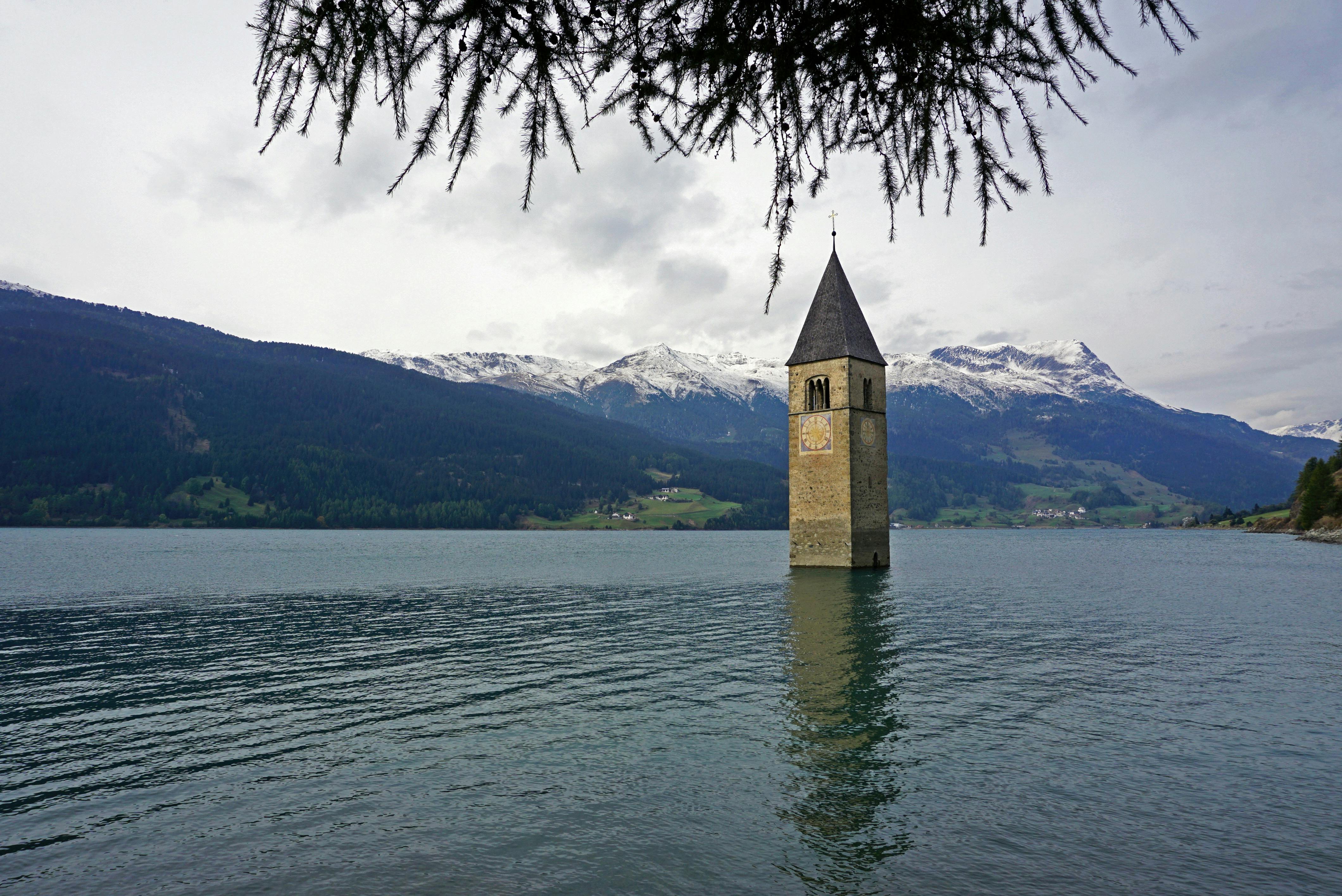A misty morning and silver drizzle: Padmasambhava’s teachings on life, death and rebirth
Hey noble! Recognize that you are in the middle. Now, as the cycle of life is suspended, all things dawn as lights and deities. All space dawns filled with blue lights…pure reality manifests itself in subtle and dazzling visions, vividly experienced, naturally terrifying. Don’t be afraid… you can’t die. It is enough to recognize such visions as your own perceptions. –Tibetan Book of the Dead (The Great Book of Natural Liberation Through Understanding in the Middle, trans. Sogyal Rinpoche)
Fearing death, I went to the mountains. Over and over again, I meditated on the unpredictable arrival of death and took the strength of immortal and unchanging nature. Now I am beyond all fear of dying! –Milarepa
On a gray, gently raining morning at the Pacific Asia Museum in Pasadena in 2006, I heard Thondup Tulku teach about the bardos, the in-between phases, the “between” death and rebirth. Once in the hospice, I met a Buddhist who wanted The Tibetan Book of the Dead to be read to him in his agony (also a bardo: the “between” dying and final death). He felt that he would “help him achieve liberation.” This book is said to have been written by Padmasambhava, who brought Buddhism to Tibet. Karma Lingpa found this “treasure” in the 14th century.
The stories from Padmasambhava’s life give me confidence that great power can emerge from the practice of Buddhist meditation and that this power must be used for the good of humanity. Said to be an emanation of Amitabha Buddha, Padmasambhava traveled from India to Tibet to introduce Tantric Buddhism. It was said that he defeated powerful demons. His companion, the abbot Santarakshita, brought from India the sutras and moral precepts of the Buddha. Padmasambhava was invited to Tibet by King Trisong Dessen around 750 AD.
There was an art exhibit in 1998 at the Huntington Museum of Art that featured an impressive thank you of Padmasambhava, with a small-scale Amitabha Buddha above it. Padmasambhava is depicted with his Eight Forms, which represent eight obstacles that Padmasambhava overcame in his own spiritual awakening to wisdom, compassion, and all-inclusive awareness. These Eight ways are teachings so that the student knows his particular obstacles to full spiritual awakening. Buddhism teaches me that I must directly experience not only the good feelings about myself, but also the distressing emotions within me of anger, deep loneliness, self-reproach, jealousy, resentment, and revenge. Padmasambhava is a shining example of the true guru teaching direct enlightenment to his students through a practice of moral purification and dedicated meditation.
Padmasambhava, the great Buddhist yogi of tantras, or esoteric practices, is colorfully painted on the cotton Thanka, with opaque mineral pigments deep in water-based collagen, reds, golds, blacks, greys, blues, pearls, greens, oranges. He sits with supreme dignity and a sense of spiritual accomplishment, dressed in a red robe. He is seated on a lotus that appears to ascend, hands in ritual positions, right hand holding vajra, symbolizing the eternal nature of absolute truth, indestructible like a diamond of diamonds. He is surrounded by his other forms, other Buddhas and consorts. His left hand holds a skull cup; death is present. A follower’s staff rests on his left shoulder.
Padmasambhava was himself a king in India, but he decided to leave his conventional social ways, however high-class, to pursue what would take away his feeling of dissatisfaction with life. He began to see deeply the transience of life. He meditated on many carnal grounds. When Padmasambhava was a teacher in Tibet, he manifested “protective” powers that allowed the Dharma, the teachings on the end of suffering and the meaning of true happiness, to establish itself as the dominant religion of Tibet. It was said that he could “overcome” the demonic influences of violence and conflict. Padmasambhava taught his disciples; he translated Buddhist texts from Sanskrit into Tibetan. He wandered all over Tibet, with his beloved consort, Yeshe Tsogyal, who recorded his teachings.
Evaluating that the teaching of the Dharma in Tibet was fulfilled, Padmasambhava decided to live out his last days on the island of Yak-Tail, in southwest India, where he pacified the native cannibals. Through his great yogic powers, compassion and his impeccable meditation practice, he taught his students to overcome all fear by living in his “Palace of Lotus Light”, the experience of the Eternal.
The Tibetan Buddhist sees the processes of birth, death and rebirth as an opportunity to develop spiritually, even with the possibility that one can recognize the nature of the mind and heart and be free. This purely “mental” process (experiences in consciousness) is said to last for forty-nine days. We don’t necessarily have to take these teachings literally; we can apply the teachings to any situation of impermanence, transition, gain, loss, death and resurrection. In meditation, we often notice the “gap” between the in-breaths and the out-breaths. Both “arise”, “dwell”, “cease to be”. Every day living.
Thondup tells us about the teachings of Padmasambhava; Thondup rambles on without notes, looking into the “distance” above our heads; he is thin, has crew-cut hair, wears a maroon tunic and a burnt orange shirt. He is sitting in a padded brown and white chair, feet on the floor. A paper and brocade thank you are hung behind him. To the sides are small tables with four yellow tulips in a pot and a vase of pink and purple lilies.
We do a preliminary meditation to relax and loosen our conceptual minds and anchor ourselves in a calm state of mind, letting our busy thoughts slowly recede. So we “extend and expand the energy of our meditation, rejoicing in this life.”
Thondup encourages us to practice improving the quality and habits of our mind; then we will enjoy such “habits” and dispositions after death when consciousness, if it evolves, will experience the bright, clear and spacious state, “dawn sky”, along with sweet and terrifying sounds and shapes. Frightening, magnificent, comforting, threatening, and outlandish experiences occur.
“If your mind grasps, clings to, avoids, how I want this or how I want to push it away, then you can lose consciousness. The ‘light’, the deities, the displays and the ‘trips’ are not some objects, but expressions of your own state of consciousness.”
You can appear before the Buddhas or saints for guidance; you can go through “hells” or “heavens”. Your experiences are culturally influenced. A Christian can meet Jesus. Walking along a narrow path, you can find a “partner”. You can meet the Lord of Death, where the “good” and “bad” deeds of your life are reflected. You can enter the Pure Land, human life, become an animal, experience worlds of jealous gods or realms of longing but not satisfied “hungry ghosts”. All of this is possible within your own awareness.
Reginald Ray: “The advantage of the human realm is that in the higher realms there is so much happiness that beings are not motivated to change their situation, while in the lower realms there is so much suffering that beings are unable to get far enough away to learn and change. Only in the human realm is there enough suffering to motivate spiritual development, but not so much that beings are crushed by it.”
Thondup suggests that we continue to cultivate love, wisdom, and the aspiration to help others. We wish for ourselves and for everyone to be happy and finally “liberated” from the cycle of birth-life-death-rebirth. Such a realization is ultimately “unspeakable.”
As I headed home, I showed Thondup a peace sign. I think of Kabir: “Friend, wait for the Host while you are alive. Jump into the experience… what you call ‘salvation’ belongs to the time before death. If you don’t break your ropes while you are alive, do you think the ghosts will after? If you make love to the divine now, in the next life, you will have the face of fulfilled desire.” Thondup Tulku smiled back and took his leave.
*Tulku Thondup Rinpoche was born in Golok, eastern Tibet. He entered his formative period in a Nyingma monastery until political changes in Tibet forced him to flee to India in 1958.
Thondup taught Tibetan and Tibetan literature at Lucknow University (1967-76) and Visva Bharati University (1976-80). In 1980, Thondup came to Harvard University as a visiting professor. For the past 23 years, he has been living in Cambridge, Massachusetts, where he teaches Tibetan Buddhism, particularly Nyingma Buddhism. Thondup travels throughout North America and Europe, leading healing meditation workshops.



